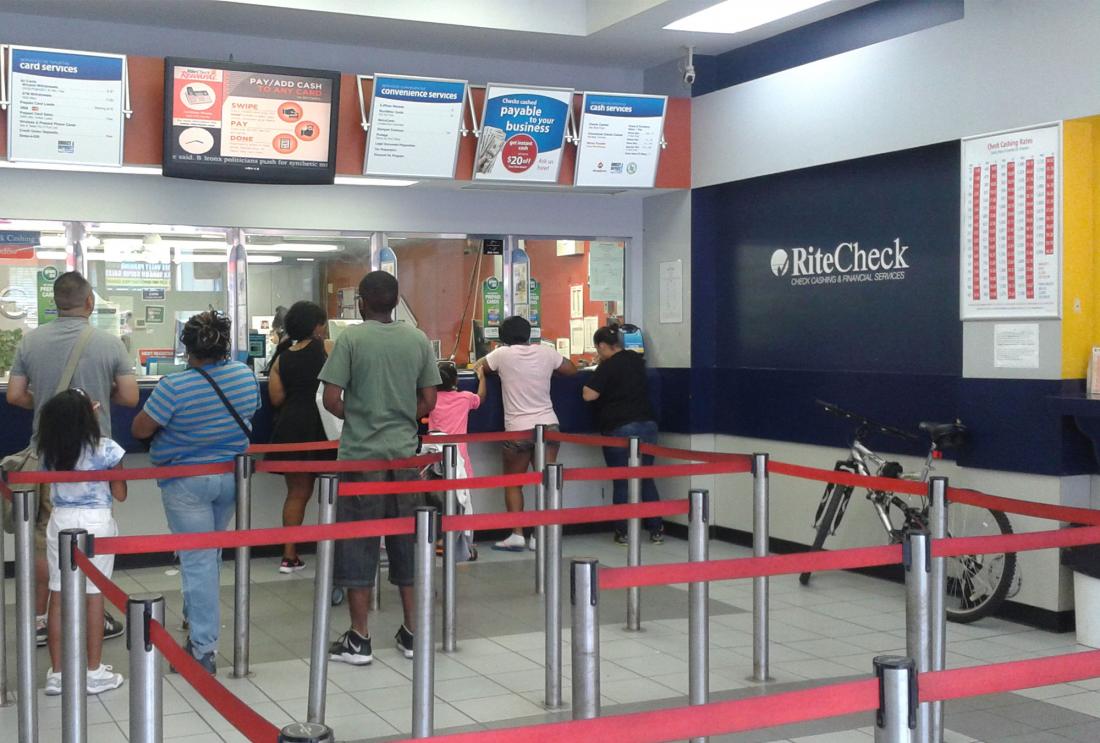Cash & Stash: Encouraging Saving at a Check Casher in the United States
- Urban population
- Adults
- Savings/deposits
- Nudges and reminders
- Savings
Many financial products such as 401k plans have been designed to help US consumers overcome limited self-control and limited attention in order to reach their savings goals. However, reaching low-income consumers with such behaviorally-designed financial products can be difficult. In the Bronx, NY, researchers evaluated ways to encourage “impulse savings” at a check casher, testing how free savings accounts coupled with prompts and incentives to make deposits—offered at the moment when people have cash in hand—impacted savings behavior and customer loyalty. Formal savings accounts provide a secure and structured way for households to build assets and plan for the future, but in 2013, 9.6 million Americans lacked a formal savings account. Researchers evaluated the impact of providing reminder messages and incentives to deposit into a free savings account on clients’ savings behavior and customer loyalty.
Policy issue
In 2015, just over half of American households reported being able to cover a $400 emergency expense with savings or a cash equivalent. Formal savings accounts can provide a secure and structured way for households to build assets and plan for the future. However, in 2013, nearly 9.6 million American households were considered “unbanked,” meaning they did not have a savings or a checking account.1 Previous research has shown that behavioral biases such as impulsivity, procrastination, and/or forgetfulness can make it difficult for people to save. Reducing the inconvenience of depositing money, providing incentives to save, or offering reminders at key moments, such as when individuals have cash on hand, may help facilitate saving. One of these key moments may be when individuals are cashing checks; approximately one-quarter of unbanked households surveyed in 2013 reported using check cashers in the previous month.2 This evaluation examined the impact of providing reminders and incentives to save to individuals making financial transactions, such as cashing checks, on their savings behavior in the United States.
Context of the evaluation
RiteCheck Cashing, Inc. operates thirteen branches serving approximately 100,000 New Yorkers with check cashing, money transfer, and bill payment services in un- and under-banked areas of the South Bronx and Harlem. According to customer data, 78 percent of RiteCheck clients earn annual incomes under $40,000 and 57 percent have up to a high school diploma/GED.
Innovations for Poverty Action (IPA) partnered with RiteCheck and Bethex Credit Union3 , a federal credit union, to develop a free savings product called Cash & Stash to provide RiteCheck customers with a simple way to set aside money while they had cash in hand. Customers could use Cash & Stash accounts to make savings deposits and withdrawals from any RiteCheck store at any time. The account did not have any fees, nor a monthly minimum balance requirement, and accrued interest (with a 0.35% annual percentage yield) which was paid two times per year. There was no ATM card associated with the account; all transactions had to be made in person at a RiteCheck store.

Details of the intervention
Researchers evaluated the impact of providing reminders and incentives to make deposits into Cash & Stash savings accounts on individuals’ short and long-term savings behavior at a check casher in the Bronx, New York. In addition, researchers evaluated the account’s profitability for the provider and its effects on client loyalty. The evaluation was conducted among RiteCheck customers who signed up for a Cash & Stash account, provided by Bethex Credit Union. Professional marketers and RiteCheck tellers recruited customers to open accounts, with the goal of recruiting 1,200 new clients during a three-month promotional period from February to April 2015.
The 872 clients who signed up for an account were then randomly assigned to one of four groups:
- Reminder only. Each transaction performed by these accountholders triggered a teller “pop-up” window that reminded tellers to ask customers if they wished to make a savings deposit.
- Sweepstakes & reminder. Accountholders in this group received the teller prompt, as described above, as well as a reminder of a sweepstakes incentive to save. At the end of each week, clients were awarded sweepstakes entries based on the balance in their Cash & Stash accounts. There were monthly drawings for small prizes ($50 cash prize), and grand prize drawings ($500 cash prize) in July 2015, January 2016, and July 2016.
- Reward points & reminder. Accountholders in this group received the teller prompt, as well as a reminder of a rewards points-based incentive to save. Based on the balance held in their Cash & Stash accounts, clients earned rewards points for an existing RiteCheck customer rewards program at the end of each week. These points could be redeemed for rewards at the RiteCheck store, with 7,000 points worth $1.
- Comparison group: Account only. The accountholders did not receive any additional prompts or incentives to save.
Researchers collected data through RiteCheck’s administrative customer database, including transaction-level data on customers’ Cash & Stash accounts, and focus groups conducting in September 2016.
Results and policy lessons
Study ongoing; results forthcoming.
"2013 National Survey of Unbanked and Underbanked Households."Federal Deposit Insurance Corporation, October 2014.
"Alternative Financial Services: A Primer." Federal Deposit Insurance Corporation, April 2009.
USAlliance took over BethexFederal Credit Union in December 2015


